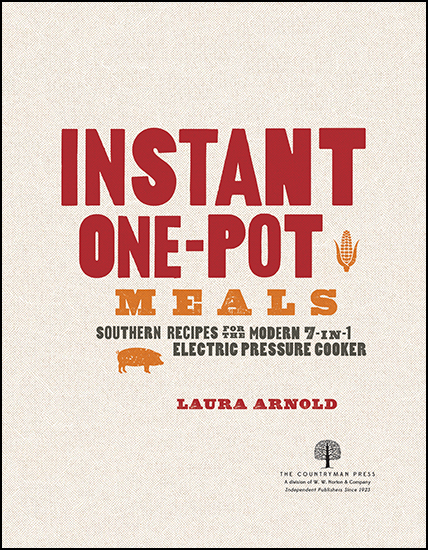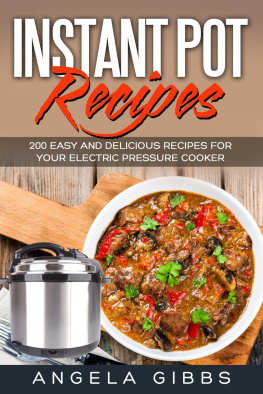Also by Laura ArnoldBest Simple Suppers for TwoBest Sweets & Treats for Two Copyright 2018 by Laura Arnold All rights reserved For information about permission to reproduce selections from this book, write to Permissions,
Copyright 2018 by Laura Arnold All rights reserved For information about permission to reproduce selections from this book, write to Permissions,
The Countryman Press,
500 Fifth Avenue, New York, NY 10110 For information about special discounts for bulk purchases, please contact
W. W. Norton Special Sales at
specialsales@wwnorton.com
or 800-233-4830 Book design by Laura Palese
Production manager: Devon Zahn
Cover photographs: left Aimee M Lee/Shutterstock.com; center Olga Miltosova/Shutterstock.com; right Debbi Smirno /iStockphoto.com
Cover design by Laura Palese The Countryman Press
www.countrymanpress.com
A division of W. W. Norton & Company, Inc. 500 Fifth Avenue, New York, NY 10110 www.wwnorton.com 978-1-68268-160-2 (pbk.)
978-1-68268-161-9 (e-book) FOR MY
DAD , THANKS FOR ALL OF
YOUR LOVE AND SUPPORT IN
MY FOODIE ADVENTURES 
CONTENTS




Cooking Southern food can often seem daunting.
Classic recipes call for so many ingredients, and it can take hours of love to turn out the end result. Instant One-Pot Meals takes traditional Southern recipes and adapts them, using the electric pressure cookernow all of that Southern flavor can be made in around an hour or less, so you dont have to labor over the stove for an entire afternoon. Just imagine being able to get Southern Barbecue Ribs or Collard Greens with Bacon on the table after a long day at the workplace! And it gets even better: try making Hummingbird Cake or Key Lime Pie for dessert and say goodbye to packaged ice cream and cookies as an after-dinner sweet treat. In addition, nearly all the recipes in this book are one-pot dishes, meaning that you can cook these recipes in minimal time, and you only have one pot to clean. And dont think you can only use your electric pressure cooker for dinner and dessertyou can also use it to make breakfast, sides, condiments, and stocks in minimal time.
USING YOUR ELECTRIC PRESSURE COOKER
Most modern electric pressure cookers have at least 7 functions: Pressure, Saut, Slow Cook, Rice Cook, Steam, Yogurt, and Keep Warm.
USING YOUR ELECTRIC PRESSURE COOKER
Most modern electric pressure cookers have at least 7 functions: Pressure, Saut, Slow Cook, Rice Cook, Steam, Yogurt, and Keep Warm.
The recipes in this book mainly use the Manual pressure cooker setting, with variations for the Slow Cook setting for certain recipes. The Manual setting allows you to adjust the amount of pressure between high pressure and low pressure so that a complex dish turns out perfect every time. When using your pressure cooker it is important to refer to the user manual for your specific model. Basic use of the pressure cooker first involves locking the lid and listening for the beeping noise to ensure it is secure. Second, be sure the steam valve is in the locked position on top of the pressure cooker. Choose the Manual setting or another setting appropriately and select high pressure or low pressure and a time period.
The pressure cooker will take anywhere from 5 to 10 minutes to come to pressure. This adds additional cooking time, but the benefit is that you do not need to watch the pot once cooking has begun. When the pressure cooker is finished cooking it will beep, signaling you to completely shut off the pressure cooker or to select the Keep Warm setting until you are ready to serve. It is best to shut off the pressure cooker so that the contents inside do not overcook. When you are ready to open the pressure cooker, you have a choice of either a quick release of pressure or a natural release of pressure. Be sure to release the steam with the valve facing away from you! To reduce the amount of steam coming out of the pressure cooker, use a towel to cover the valve when using either quick release or natural release. Be sure to release the steam with the valve facing away from you! To reduce the amount of steam coming out of the pressure cooker, use a towel to cover the valve when using either quick release or natural release.
Using natural release allows the pressure cooker to release the steam slowly on its own. Natural release is performed by turning the machine off and waiting for the float steam valve to drop naturally (refer to your pressure cooker manual for image). Natural release can take up to 15 minutes. Several recipes in this book call for natural release for 10 minutes and then a quick release to speed the process, allowing you to get dinner on the table faster. Once the dish is finished cooking, the liquid in the pot often needs to be reduced and thickened. This is very easy to do in the pressure cookerjust set the pot to the Saut setting and allow the liquid to simmer until it has thickened appropriately.
Whenever you are removing the lid of the pressure cooker, be sure to open the lid facing away from you. Doing so prevents you from coming into contact with excess hot steam that might be in the vessel. When making cakes or other recipes that use a cake pan, it is helpful to make a foil strap that wraps around the bottom of the cake pan. This foil strap will serve as handles when you lower and lift the pan into the pressure cooker. Use a piece of foil that is about 20 inches in length, and then fold the foil until you form a 1-inch-wide strap.
SPECIAL EQUIPMENT
Making bakes, casseroles, dips, and even desserts like cakes and cobblers require special baking pans that will fit inside of the pressure cooker.
SPECIAL EQUIPMENT
Making bakes, casseroles, dips, and even desserts like cakes and cobblers require special baking pans that will fit inside of the pressure cooker.
The pans used in this book are: 6-inch round cake pan or souffl dish (2 to 3 inches deep) 7-inch round cake pan or souffl dish (2 to 3 inches deep) 8-inch springform pan Two (5-by-3-inch) mini loaf pans (optional) Many of the recipes in this book use a broiler to finish the dish. Use the broiler where indicated for a toasted, crunchy top for casseroles and bakes or to crisp the skin on chicken dishes. When listed as optional, you can skip this step for quicker cooking or to avoid using multiple appliances. 


 Next page
Next page
















 Copyright 2018 by Laura Arnold All rights reserved For information about permission to reproduce selections from this book, write to Permissions,
Copyright 2018 by Laura Arnold All rights reserved For information about permission to reproduce selections from this book, write to Permissions,



